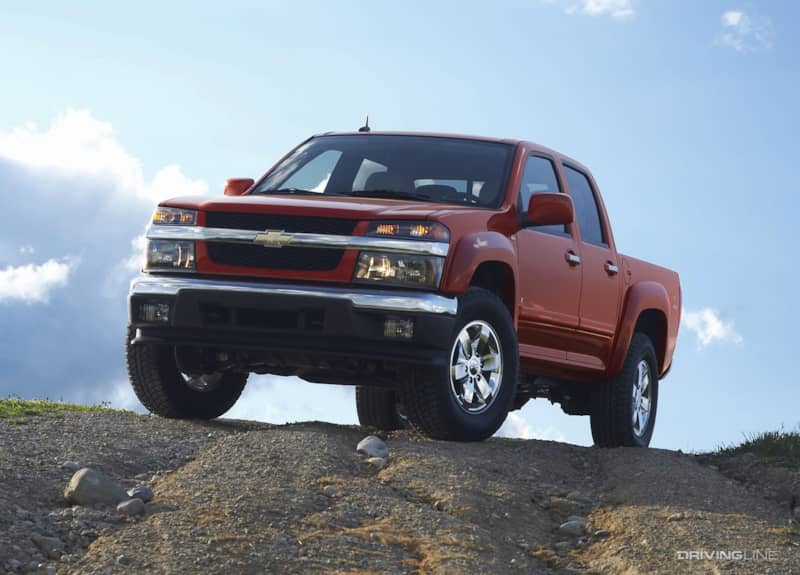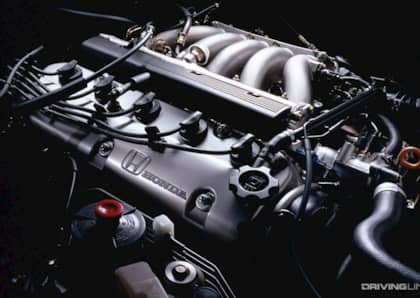Gimme Five: 5-Cylinder Engines That Went Against The Motor Mainstream
What's the least-common number of cylinders in any modern engine? Surprisingly, the answer is five. Five-cylinder engines are outnumbered by more exotic V10 and V12 motors, and even three-cylinder motors are now filling showrooms thanks to cheap turbocharging that lets them mimic their larger displacement siblings in terms of power.

With so few five-cylinder engines out there, the ones that did make it to the market are often intriguing, either due to their performance, their design, or their importance to the manufacturer. Check out these 5 cylinder motors that went against the mainstream and carved out unique, if occasionally brief, niches among car and truck buyers.
Volvo V70R / S60R / 850R
For a period of more than 20 years Volvo kept a five-cylinder engine in its stable, stuffing some uneven variation of cylinders under the hoods of entry-level hatchbacks, high performance sedans and wagons, and even crossover SUVs.

Of these motors, the most interesting 5-cylinder was the series of turbocharged units found in the brand's R stable of go-fast four and five-door models. Starting in 1995 Volvo introduced the 850 T5-R (later shortened to just the 850R), which featured a 2.3L engine good for just over 240hp and 250 lb-ft of torque. Three years later, the 850 was replaced by the S70 (sedan) and V70 (wagon), each with their own R variants that delivered close to 250hp and 258 lb-ft of torque from a revised version of the same engine.

By the year 2000, the R straight-five engine had been punched out to 2.4-liters, adding another 11 horse thanks to a larger turbocharger, and in 2004 the second-generation version of the V70 R and S60 R delivered a knock-out 300 horsepower punch from a 2.5-liter 5-cylinder engine (that was also good for 295 lb-ft of twist). The low-volume wagon and sedan combo were out of showrooms after 2007, but left an indelible mark on European luxury sport fans.
Chevrolet Colorado / GMC Canyon / Hummer H3
General Motors was known for experimenting with various engine configurations (including an enormous 702 cubic inch 'Twin-Six' V12 in the 1960s), but it only ever created one five-cylinder production motor. Intended to offer its mid-size trucks a relatively frugal, yet still torquey option, Chevrolet, GMC, and Hummer each had access to an inline five-cylinder from 2004 to 2009.

In the Chevrolet Colorado and GMC Canyon pickups the 3.5L engine was capable of 220hp 225 lb-ft of torque. This unit was replaced in 2007 with a 3.7-liter version that added 19 horses and 17 lb-ft of torque (it had already became the standard engine for the platform-sharing Hummer H3 SUV and SUT in 2006). Isuzu would also get the same five-cylinder fun for its i-Series trucks that were straight-up rebadgings of GM fare.

The motor was based on the Atlas inline six that had been used in the startlingly diverse range of SUVs built on the GMT360 platform. Known as the Vortec 3500 and the Vortec 3700, to this day they represent the only five-cylinder motors to have ever been sold by a Detroit-based automaker.
Audi Quattro
Audi's original Quattro sport coupe helped introduce the company's all-wheel drive system to North American buyers. Built in part to homologate for rally competition, the Quattro also came with a five-cylinder engine that churned 200 horsepower from a mere 2.1-liters thanks to a turbocharger.

Introduced in 1980, the car arrived in the United States two years later where it lost 40 horses but stood apart from the rest of the import pack thanks to AWD. By 1989 the engine had jumped to 180 horsepower (thanks to a 20-valve version of the motor).

The hatchback never really garnered more than a cult following state-side, but in international rally competition versions of its five-cylinder motor put out between 300 and 450 horsepower, depending on tune, allowing it to dominate WRC's Group B division.
Mercedes-Benz 240D/300D/SD/G-Class
You just knew sooner or later a diesel engine was going to make it onto this list, and the most likely candidate in five-cylinder land hails from Mercedes-Benz. Starting all the way back in 1974 the Silver Star began outfitting its mid-size sedans, coupes, and wagons with a 3.0L naturally aspirated diesel I5.

Known as the 240D and the 300D, these models featured the OM617 engine that grew from a 4-cylinder diesel that preceded it. Initially the 5-cylinder was oriented almost completely towards efficiency and longevity, producing a modest 79 horsepower (later upgraded to 88 horses in 1979). It also found its way under the hood of the G-Class SUV, where it lasted all the way to 1991.

A turbocharged version of the engine, the OM617A, provided relief in the form of 119 horsepower and 170 lb-ft of torque, numbers good enough for Mercedes-Benz to stuff the engine in its flagship S-Class and sell the 300SD as the first turbodiesel vehicle outside of heavy industry at the end of the 1970s. The diesel would be further refined through the middle of the decade, eventually producing 123 horsepower and 184 lb-ft of torque, along the way earning a reputation as a million-mile motor among Mercedes-Benz enthusiasts.
Acura Vigor
Once upon a time Honda's export-only luxury brand, Acura, was willing to go toe-to-toe with luxury sedans from Mercedes-Benz, Lexus, and BMW. Its early flagship, the Vigor, wasn't a popular choice among moneyed professionals, but it did deliver the most unusual engine ever built by Honda: a 2.5-liter, five-cylinder.

Also offered as a 2.0L in the Japanese market (where Acura models were badged as Hondas), the five-cylinder delivered 175hp and 170 lb-ft of torque in 1992 and was a decent performer in the Honda Accord-derived platform that served under the Vigor's sleeker bodywork. Featuring a single overhead camshaft, it was reasonably sophisticated, although not as smooth as BMW's inline six.

Honda wanted an engine that wasn't as rough as a four-cylinder but sipped less gas than a V6, and the 2.5-liter I5 certainly filled that role. It was also mounted longitudinally in the car, which was unusual for front-wheel drive cars of that era. The engine continued on when the Vigor was replaced by the TL in 1996, eventually leaving after that car's 1998 redesign.











